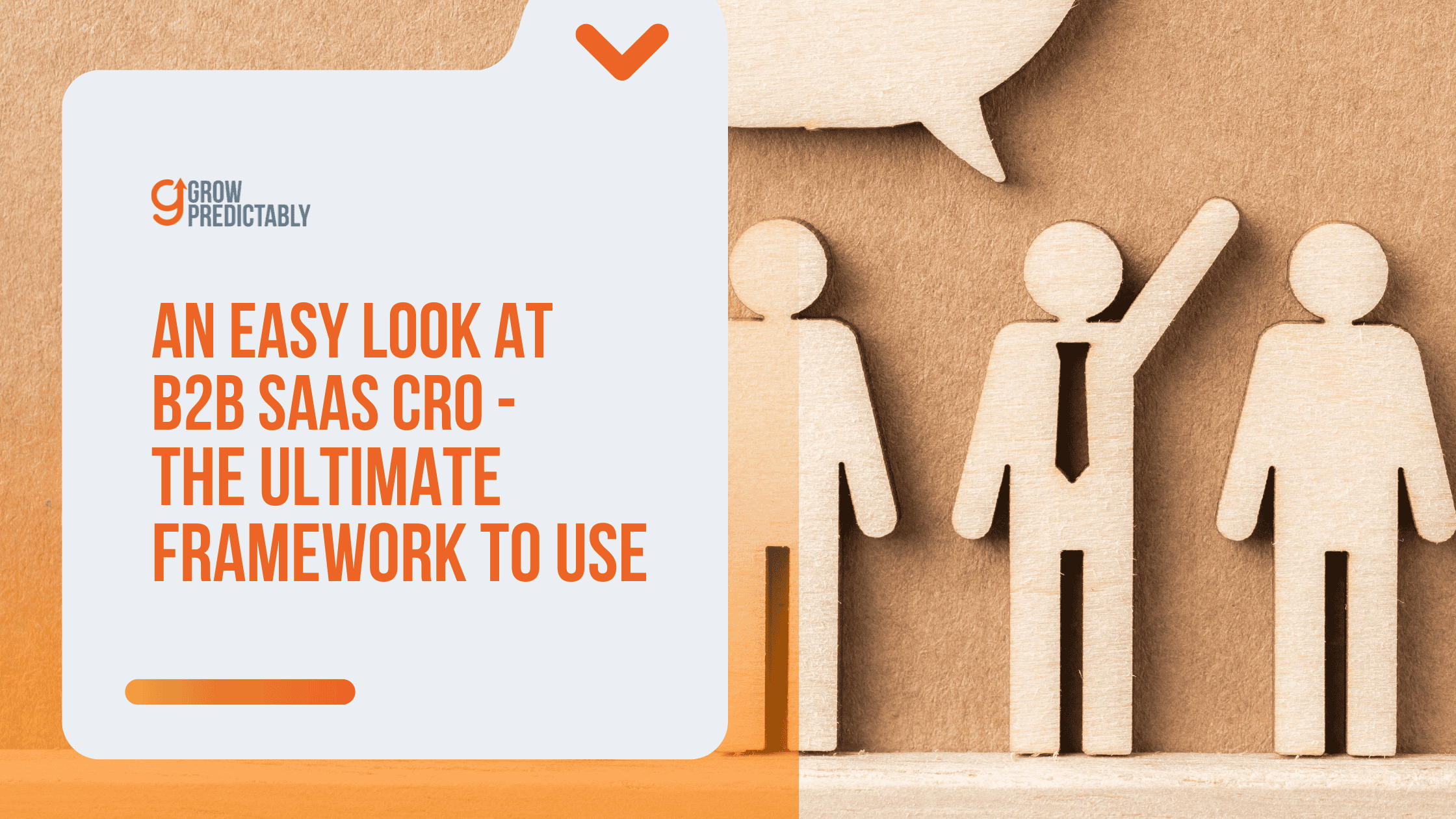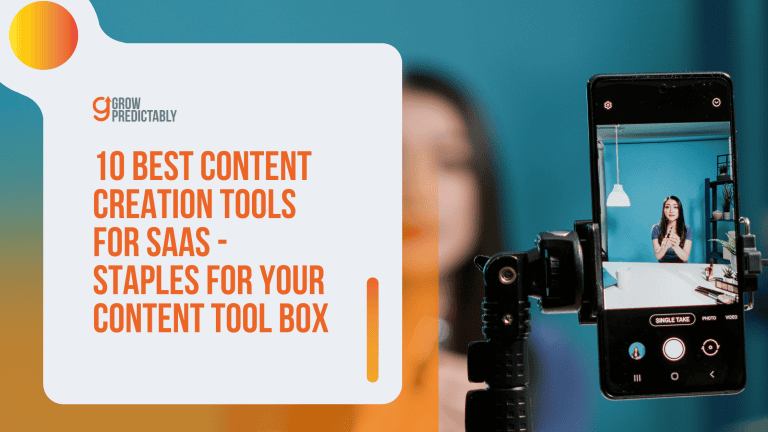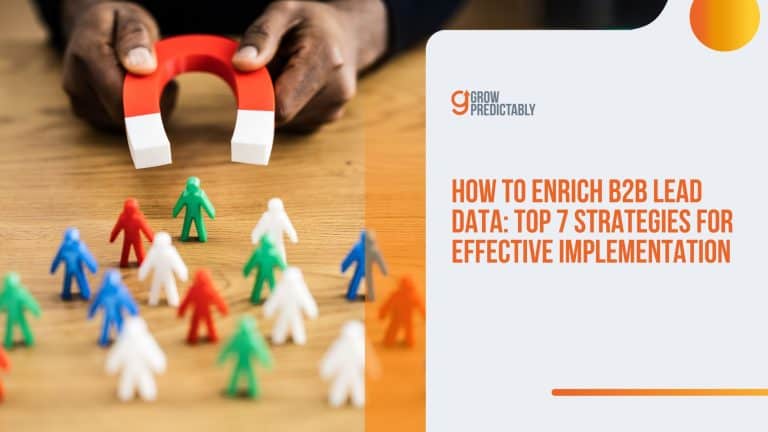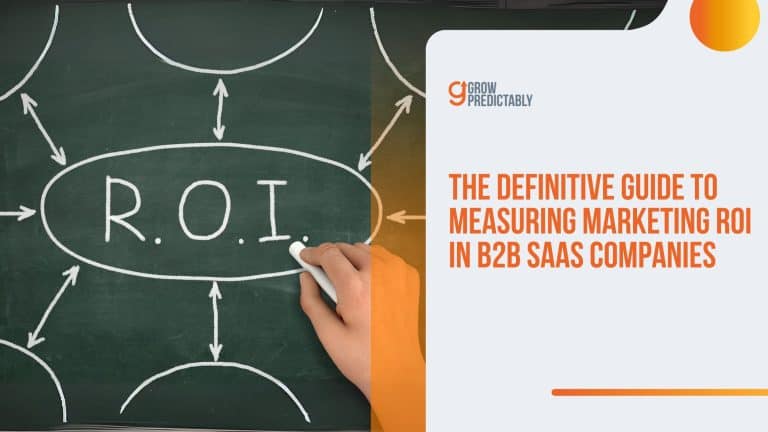An Easy Look at B2B SaaS CRO – The Ultimate Framework to Use
Most people suck at B2B SaaS conversion rate optimization because they copy what works in B2C.
Different game. Different rules.
SaaS buyers don’t impulse buy—they research, evaluate, and loop in five other people before making a decision.
If you ignore that and just tweak button colors, you’re approaching it all wrong.
Let me show you what actually works—without the fluff.
The Ultimate Guide to B2B SaaS Conversion Rate Optimization
B2B SaaS CRO or conversion rate optimization is the process of increasing the percentage of website visitors who become paying customers.
Simple as that.
What Makes B2B SaaS CRO Different
But here’s what makes it different from regular CRO: B2B sales cycles are long (often 3-6 months), and multiple people are involved in buying decisions.
Importance of Conversion Rate Improvement
Driving revenue growth is key. Let’s get real about why this matters.
When you improve your conversion rate by just 1%, it can mean hundreds of thousands in extra revenue.
Plus, you spend less money getting each customer (lower CAC), and they stick around longer.
Main Challenges for B2B SaaS Companies
Here are the main challenges B2B SaaS companies face:
1. Long Sales Cycles
- Prospects need time to evaluate.
- Multiple demos and meetings required.
- Budget approval processes.
2. Group Decision Making
- 6-10 people typically involved.
- Different needs for each stakeholder.
- Need content for various roles.
3. Personalization Requirements
- Industry-specific use cases.
- Company size considerations.
- Role-based messaging.
Common Mistakes in Conversion Rate Optimization
The big mistake?
Looking at the wrong numbers.
Many teams get excited about stuff like:
- Social media followers
- Email list size
- Website traffic
Instead of these, marketers, especially B2B marketers, need to focus their resources and efforts on the metrics that truly move the needle.
Focus on the Right Metrics
Vanity metrics like followers and views don’t tell you much.
Instead, sales and marketing teams should focus on numbers that matter:
- Trial-to-paid conversion rate
- Demo request completion rate
- Qualified lead conversion rate
Tracking System for Metrics
Smart SaaS companies track these weekly using a simple system:
🔴 Red = Below target
🟡 Yellow = Near target
🟢 Green = Meeting/exceeding target
This makes it easy to spot issues fast and fix them before they become problems.
Remember: You can’t improve what you don’t measure.
Pick the right metrics, track them weekly, and make changes based on real data – not hunches.
CRO Strategies Using the CVJ (The Ultimate Framework)
If you’re in the B2B SaaS business looking to boost your conversion rates, here’s something fresh.
This guide uses the Customer Value Journey (CVJ) framework, a detailed framework that outlines the path from someone first hearing about your brand to becoming a loyal advocate.
It encompasses multiple steps such as awareness, engagement, conversion, and advocacy, each equipped with tailored strategies to enhance customer relationships and brand loyalty.

Unlike traditional sales funnels, CVJ emphasizes long-term engagement and personalized consumer interactions, making every step of the journey a strategic move toward greater customer loyalty, retention, and conversion rates.
This method ensures that each interaction adds significant value, propelling customers further along their journey with your SaaS business.
By understanding and optimizing each stage, you can significantly improve how you convert leads into loyal customers, driving revenue growth.
Let’s dive into each stage.
Awareness Stage
The Awareness Stage is all about making potential customers aware of your solution. Your main goal is to catch their interest so they want to learn more.
Here are some effective tactics to increase conversion rates:
- Pay attention to landing page design by running A/B tests on your homepage headline and hero section first — this area often determines if visitors stay or leave
- Create different landing pages for different traffic sources (paid ads vs organic)
- Test shorter vs. longer form copy based on visitor behavior data
These strategies associated with effective landing pages help you figure out what grabs attention and makes a visitor stick around.
The right message can make a big difference in drawing them in.
Engagement & Subscribe Stages
At these stages, you’re encouraging visitors to interact more deeply with your SaaS business and eventually subscribe.
Focus on making this process engaging to enhance customer acquisition:
- Use multi-step forms instead of one long form (typically increases completion by 35-40%).
- Ask only essential questions upfront, then use progressive profiling to gather more info later
- Add social proof near form fields (“Join 1,000+ companies who…”)
- Test exit-intent popups with specific offers for abandoning visitors
Using these tactics helps you gradually build a relationship and improve conversion rates.
It eases people into sharing information with you, ensuring they don’t feel overwhelmed.
Convert & Excite Stages
Now, get your subscribers to convert into customers and get excited about your offer by ensuring customer success.
Show them the value quickly:
- Show product value fast — get users to their “aha moment” in the first session.
- Create guided product tours focused on core features
- Send targeted onboarding emails based on user actions
- Offer live chat support during the trial period
- Follow up with users who haven’t completed key activation steps
These actions help users see the immediate benefit of your product, increasing their likelihood to commit and boosting conversion rates.
Ascend Stage
This stage is for growing the relationship with your existing customers.
Aim to increase their investment:
- Identify expansion opportunities through usage patterns
- Target power users for upsells and add-ons
- Create in-app messaging for feature discovery
- Test pricing page layouts and packages
By understanding how customers use your product, you can personalize offers and encourage upgrades, adding more value to their experience.
Advocate & Promoter Stages
Finally, focus on customer retention by turning satisfied customers into advocates and promoters:
- Ask for reviews at key satisfaction moments
- Build referral programs with real incentives
- Turn case studies into sales enablement content
- Create customer communities anUse a simple red-yellow-green system:d user groups
These strategies help you leverage happy customers to attract new ones. Their endorsements can significantly boost your credibility and reach.
By adapting these strategies across the CVJ stages, SaaS companies will improve conversion processes and build lasting relationships with customers.
The key is tracking what works at each stage and doubling down on those tactics.
Start small, measure results, and expand what’s working.
Don’t try to optimize everything at once.
Remember: B2B buyers need more nurturing than B2C.
Focus on building trust gradually through each stage rather than rushing to convert.
Tips and Best Practices
Prioritize customer acquisition and driving revenue growth; consider these practices when optimizing conversion rates using the Customer Value Journey.
Utilizing these expert takes will help you achieve the best results as you tweak your strategies according to the different stages of the CVJ.
Subscribe Stage: Getting Those First Signups
- Split your forms into 2-3 steps instead of one long form. We’ve seen this bump in conversion rates by 30-40%. (Source)
- Ask only the must-have questions first. Save the nice-to-have stuff for later.
- Group similar customers based on what pages they visit and what they download. This helps you send better follow-up emails.
Engagement & Convert Stages: Turning Interest into SaaS Sales
- Create different landing pages for different customer types. Landing pages for enterprise folks should look different than one for small business owners.
- Remove any extra steps between “I want this” and “I bought this.”
- Test different headline versions. Sometimes, a small tweak can make a big difference.
Excite & Ascend Stages: Making New Users Successful
- Hubstaff used VWO to test their onboarding. They found that showing fewer features actually got more people to stick around.
- Send quick tips based on what features people haven’t tried yet.
- Check-in with new users after 3 days, not 2 weeks. Catching problems early is key.
Advocate & Promoter Stages: Getting Happy Customers to Spread the Word
- Ask for reviews right after customers hit their first success milestone.
- Make it super easy to share wins. Give them pre-written social posts.
- Start a referral program that rewards both the referrer and the new customer.
Quick Wins You Can Try Today
- Add social proof near your signup buttons
- Put your pricing in context (“That’s $2 per day” instead of “$60 per month”)
- Show a progress bar in your signup process to enhance customer success
- Add live chat to your pricing page
- Send an email 24 hours after someone starts a trial
Remember, small improvements add up and contribute to sustainable revenue growth.
Start with one thing, measure how it works, then move to the next.
In addition, there are also tactics that you cannot overlook when it comes to engaging users.
To help give prospects a realistic glimpse of your B2B solutions, leverage interactive elements that allow them to experience your SaaS.
Take a look at a few of these examples.

Metrics and KPIs to Watch Weekly for Measuring CRO Success
Let’s get real about tracking what matters in B2B SaaS CRO.
No fluff metrics – just the ones that actually show if you’re making money or not.
Take it from The Lean Startup author and entrepreneur Eric Ries, who has this to say:
Vanity metrics wreak havoc because they prey on a weakness of the human mind
Eirc Ries, Author of ‘The Lean Startup’
Trial-to-Paid Rate
The tried-to-paid rate is a metric that measures the percentage of users who convert from trying a service or product to actually purchasing it.
This will help you gauge the effectiveness of your trial offers and determine how well they are converting potential customers into paying ones.
- Red: Below 15%
- Yellow: 15-25%
- Green: Above 25%
Lead-to-Demo Rate
The lead-to-demo rate is a key performance indicator that measures the percentage of potential customers, or leads, who progress to participating in a product demonstration.
This metric provides insights into the effectiveness of initial efforts by sales and marketing teams and their ability to engage prospects sufficiently to warrant a more in-depth exploration of the product.
- Red: Below 20%
- Yellow: 20-35%
- Green: Above 35%
Demo-to-Close Rate
Assess your sales strategies as the demo-to-close rate is a metric that measures the percentage of product demonstrations that result in a successful sale or closed deal.
It indicates the effectiveness of the demonstration in convincing prospects of the product’s value, helping you assess the quality and impact of your SaaS sales pitches and demonstrations.
- Red: Below 25%
- Yellow: 25-40%
- Green: Above 40%
Customer Activation Rate
The customer activation rate is a critical metric for customer success as it measures the percentage of new users who take a key initial action within a product or service indicating successful onboarding.
This metric helps businesses understand how effectively they are engaging new customers right after sign-up, identifying opportunities to optimize the onboarding process and increase the likelihood of new users becoming active, long-term customers.
- Red: Below 40%
- Yellow: 40-60%
- Green: Above 60%
Tools You’ll Need
- Google Analytics 4 for website behavior
- Mixpanel or Amplitude for product usage
- Your CRM (Salesforce, HubSpot) for sales data
- The Growth Scorecard
Track Using the Growth Scorecard
The Growth Scorecard is a tool for tracking key performance indicators (KPIs) critical to your SaaS business’s success.
It’s designed to provide actionable insights by monitoring metrics weekly, allowing you to make data-driven decisions for continuous improvement.
Example Use: Imagine you’re managing B2B SaaS CRO. You can set up your Growth Scorecard to track the following:
- Trial-to-Paid Rate – Target: Green Zone above 25%
- Lead-to-Demo Rate – Target: Green Zone above 35%
- Demo-to-Close Rate – Target: Green Zone above 40%
- Customer Activation Rate – Target: Green Zone above 60%
Each week, review these metrics. If the Trial-to-Paid Rate falls into the Red Zone (below 15%), it triggers a review of trial engagement strategies.
Adjustments might include enhancing trial support or adding more compelling features during the trial phase.
This systematic approach ensures you’re consistently refining tactics to meet your targets and drive conversions, ultimately leading to increased revenue growth.
QUICK TIP: Set up a simple spreadsheet with these metrics. Color code them red, yellow, or green each week. Share it in your Monday meetings. This keeps everyone focused on the numbers that actually grow revenue.
Hook these metrics into your comp plans. Nothing gets people moving like tying bonuses to green numbers.
Take Note:
Ignore vanity stuff like page views or social media followers.
They might look nice but don’t pay the bills.
Focus on conversion rates that directly tie to revenue.
Common Mistakes in CRO
Let’s talk about where B2B SaaS companies mess up with CRO.
I’ve seen these mistakes hundreds of times, and they’re totally fixable.
1. Getting Distracted by Feel-Good Numbers
Too many teams get excited about stuff like Twitter followers or LinkedIn engagement—SaaS companies should be over this already.
Sure, those numbers look nice in reports, but they don’t tell you if people are actually buying your product.
What to do instead:
Focus on numbers that matter to your bottom line and facilitate revenue growth:
- Trial-to-paid conversion rate
- Demo request completion rate
- Time to first value
- Activation rate within first 7 days
2. Nobody Owns the Numbers
This is a classic problem.
When everyone’s responsible, no one’s responsible.
Teams track metrics, but nobody steps up to improve them.
What to do instead:
Assign specific metrics to sales and marketing teams:
- Marketing owns the lead quality score
- The product team owns the activation rate
- Sales own demo-to-close rate
3. Random Check-Ins vs Weekly Tracking
Many SaaS companies look at their numbers whenever they feel like it.
That’s like checking your bank account once a year – you miss problems until they’re huge.
What to do instead:
SaaS companies can use a simple red-yellow-green system:
- Red: More than 20% below target
- Yellow: Within 20% of target
- Green: Meeting or beating the target
4. “We Don’t Need to Test That”

I once worked with a company that was sure their pricing page was perfect.
When they finally tested it, small changes brought a 15% jump in conversions.
What to do instead:
- Test one thing at a time
- Run tests for at least 2 weeks
- Get enough traffic before calling winners
- Document everything
5. Copying Competitors Blindly
Just because Salesforce does something doesn’t mean it’ll work for you.
Their traffic and budget are different from yours.
What to do instead:
- Test what works for your audience
- Start small and measure the results
- Build on what works for your specific situation
Remember: CRO isn’t about doing everything at once.
Pick one of these areas, fix it, then move to the next.
That’s how you build a solid foundation for growth.
FAQs
Small Changes, Big Impact
SaaS companies that master CRO see more revenue, happier customers, and faster growth.
As we covered, the keys to success include tracking meaningful metrics, addressing the challenges of B2B buying cycles, and continuously testing improvements.
Think about it—how many potential customers are slipping through the cracks just because of friction in your sign-up process or a missing follow-up email? These small issues add up.
You don’t need massive overhauls to see results.
Start today by fixing one simple issue—improve your onboarding experience, shorten your lead capture forms, or test a new pricing page layout.
If you could optimize just one part of your funnel next week, which would it be? Let’s talk about it!








